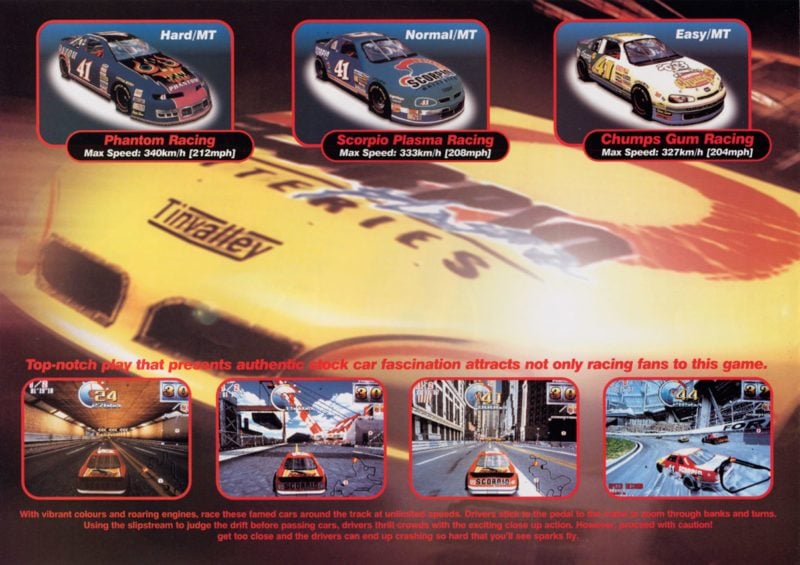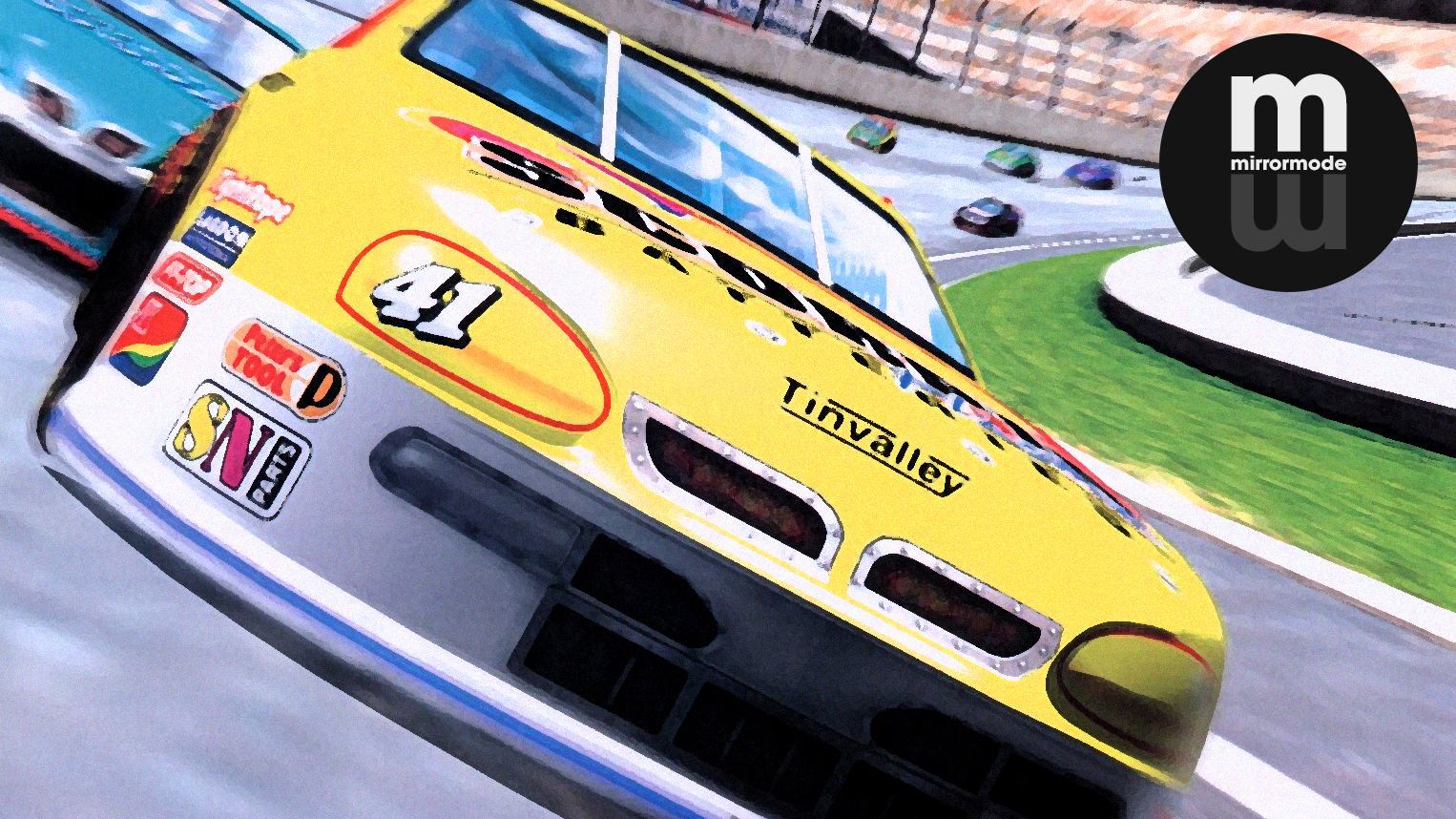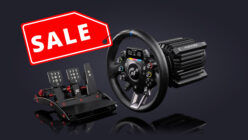Welcome to Mirror Mode, GTPlanet’s series that shines a spotlight on retro racing games. In this installment, we take a look at a fan-favorite Sega arcade racer.
Sequels have a habit of being dreaded almost as much as they’re anticipated. There’s so much uncertainty that comes with following up something beloved. Will it recapture the spirit of the original? If it doesn’t, will fans bemoan the unexpected?
It’s a phenomenon any successful creator can relate to, and in the mid ‘90s, Sega felt it, too. While the company’s smash hit, Daytona USA, was busy carving its name in the record books as the highest-grossing arcade game ever, it was time to begin work on a sequel. The task once again fell upon AM2, the prolific arcade studio responsible for Out Run, Hang-On, and Virtua Fighter.
The mid-to-late ‘90s were a strange time for Sega. The failure of its Saturn console sent the company reeling from its triumphant performance in the 16-bit era with the Genesis. Riding high no more, it couldn’t guarantee the same audience that showed up for its prior arcade breakthroughs would return.
Well, it didn’t. Daytona USA 2: Battle On The Edge emerged quietly in 1998, and strangely would never be dignified with a home port. And yet, its relative scarcity to its predecessor only bolsters its legend. For those who have played it, it remains more than Sega’s arcade racing swan song. They remember Daytona USA 2 as one of the greatest games the genre has ever produced.
What It Got Right
Refinement. If Sega sought to do one thing with Daytona 2, it was to use the enhanced power and capabilities of the company’s Model 3 arcade board to make the sequel to its stock car racer an even more visceral experience than the original.
The tech, developed in collaboration with aerospace company Lockheed Martin, had already been used on a prior Sega racer: Scud Race, known in the U.S. as Sega Super GT. Whereas Daytona was a near-parody of NASCAR, with an exaggerated physics engine founded upon Herculean feats of oversteer, Scud Race was a send up of sports car racing — specifically the BPR Global GT Series, which was replaced by FIA GT right before the turn of the century.
By the time Daytona 2 came around, the development team, led by Yakuza creator Toshihiro Nagoshi, knew how to bleed every drop of performance out of the Model 3 platform. AM2 polished the rough edges of its past efforts to provide an unrivaled arcade racing experience.
Daytona 2 sported astonishing production values throughout, but its graphics were the most obvious tell. Home consoles at the time came nowhere close to what it was pushing. (The Dreamcast could approximate it, but it would be a few more years before developers could do justice to Sega’s then-current arcade hardware). And it wasn’t just the number of polygons, or Sega’s colorful aesthetic that sold the experience. It was about the speed at which it all came rushing toward you, and the barrage of animated scenery that brought the environments to life at a relentless 60 frames-per-second.

Underpinning it all was a handling model that yet again accomplished what every great arcade racer should: it was easy and fun for beginners, but extraordinarily deep for experts. Daytona 2 expanded on the original’s physics by placing greater importance on throttle input. The steering was a bit heavier than its predecessor’s and much more so than Scud Race’s, but it was a better drive for it. The steering never got quite so light so as to induce an unexpected spin, which was one of the few points of frustration in Sega’s GT racer.
Speaking of GT, it might surprise longtime fans to know that the Daytona crew looked far beyond the arcade to draw inspiration for their second act.
“Gran Turismo is a brilliant console game offering a very realistic driving sensation,” Nagoshi told Edge in June of ’98. “Although we were developing an arcade game and obviously had to develop an arcade approach, of all the titles in production during Daytona 2’s own development, this is the game we kept an eye on.”
While it’s difficult to identify precisely how Polyphony’s landmark sim racer may have influenced Daytona 2, there’s no denying the passion and fastidious approach to physics and gameplay that made both titles feel alive behind the wheel. It was an attention to quality that extended to all aspects of these games — even their soundtracks.
If the original Daytona USA is remembered for nothing else, it’s consigned to the internet hall of fame for its infamous score, led by Sega Sound Team’s Takenobu Mitsuyoshi. Mitsuyoshi and his thunderous pipes returned for the sequel, which sported a much more dynamic and complex range of tunes thanks in part to the advancement of audio technologies through the mid ’90s.
At the time of the first game’s development, even the most advanced arcade boards couldn’t replicate CD-quality sound. Mitsuyoshi had to cut and loop individual syllables of vocal recordings to create the illusion of sustained singing in Daytona USA. Thankfully, he didn’t have to butcher his own voice for Daytona 2’s soaring, life-affirming “Slingshot,” or the soulful crooning of “Skyscraper Sequence.” In western markets, the game actually defaulted to alternate versions of each track sung by a native English speaker.
What It Got Wrong
Nagoshi’s acknowledgement of Gran Turismo proved to be more prophetic than Sega probably would have preferred.
Daytona 2 may have been a technological marvel, but it didn’t represent where racing games were going. Sega’s stable of Model 3 racers were looking quite childish and tight on content compared to The Real Driving Simulator and the litany of pretenders it inspired. As a consequence, most of them didn’t see home ports — at least in their original incarnations.
Dreamcast owners eventually got their very own Daytona, though it carried over none of what made the arcade sequel special. Daytona USA 2001, as it was known, was an entirely new game co-developed by Genki and Super Monkey Ball studio Amusement Vision. Daytona 2001 actually ran on a modified version of the Tokyo Xtreme Racer 2 engine, which says it all really. It’s best described as a hacked-together approximation with off-the-shelf parts.
Ironically however, there was not one, but two versions of Daytona 2 that filtered through arcades. Six months after the launch of the original game, Sega distributed an update titled Power Edition. This release featured a redesigned Beginner course, an Out Run-style Challenge point-to-point track that linked all three environments together, and an extra car in the form of the Hornet from the first Daytona.
Where It Stands
The story of Sega’s stock car racing series could have ended there, if not for very recent developments. Last year saw the release of Daytona Championship USA, an arcade game developed not by the same AM2 squad that gave us the first two entries, but UK-based Sega Amusements International.
As such, Championship USA isn’t really a new effort; it’s merely the 1993 classic gussied up with a modern lick of paint. It uses the same physics engine, pilfers the entirety of its soundtrack from previous installments, and adds three “new” tracks that are simply the originals mirrored, with different scenery. Even the game’s version of the Daytona International Speedway copies the layout of Daytona USA’s beginner oval, Three Seven Speedway.
In fact, Daytona Championship USA introduces so little that its initial name, Daytona 3 Championship USA, was seemingly ditched after poor feedback from fans.
That leaves Daytona 2, which will unbelievably turn 20 this year, as the final progression for the brand. It’s also one of the last arcade racers Sega AM2 ever produced, behind Ferrari F355 Challenge and OutRun 2.
Although the racing landscape has changed dramatically in the past two decades, games like Daytona USA can still be found in arcades all around the world. Even as the industry trends more realistic, there will always be a place for the instant thrills they provide.
Special thanks to Alex, a.k.a. YouTube’s MrThunderwing, whose expertise on Daytona and Sega racers in general was crucial in preparing this Mirror Mode.
See more articles on Mirror Mode and retro gaming.











